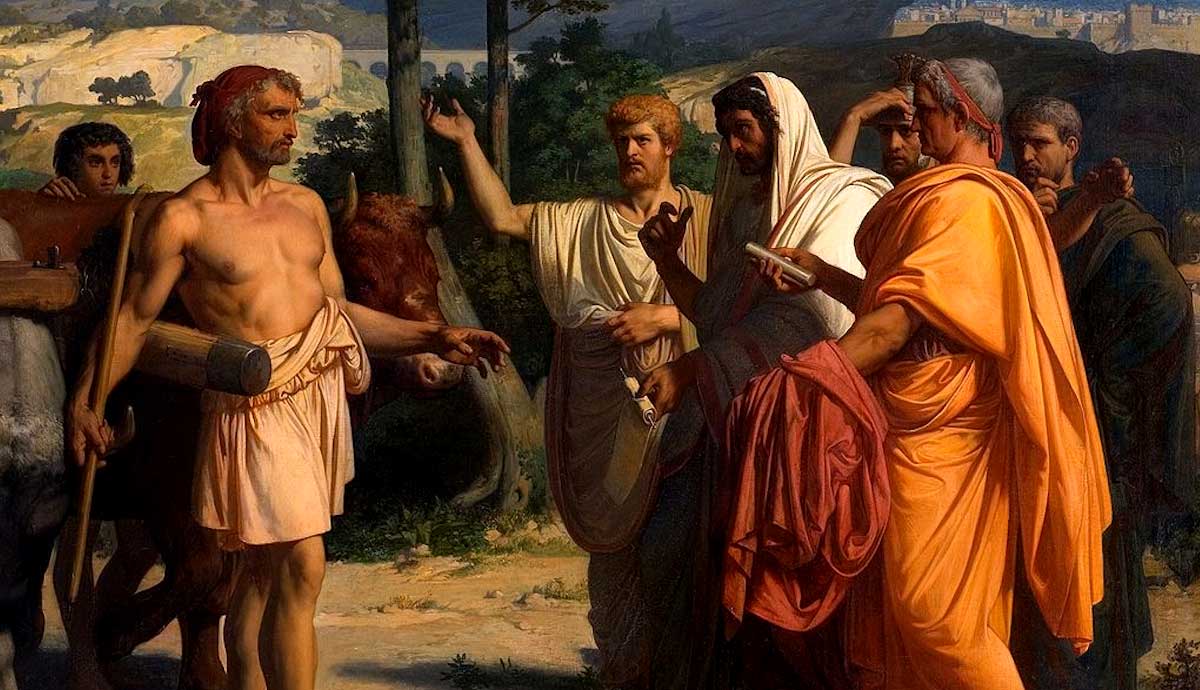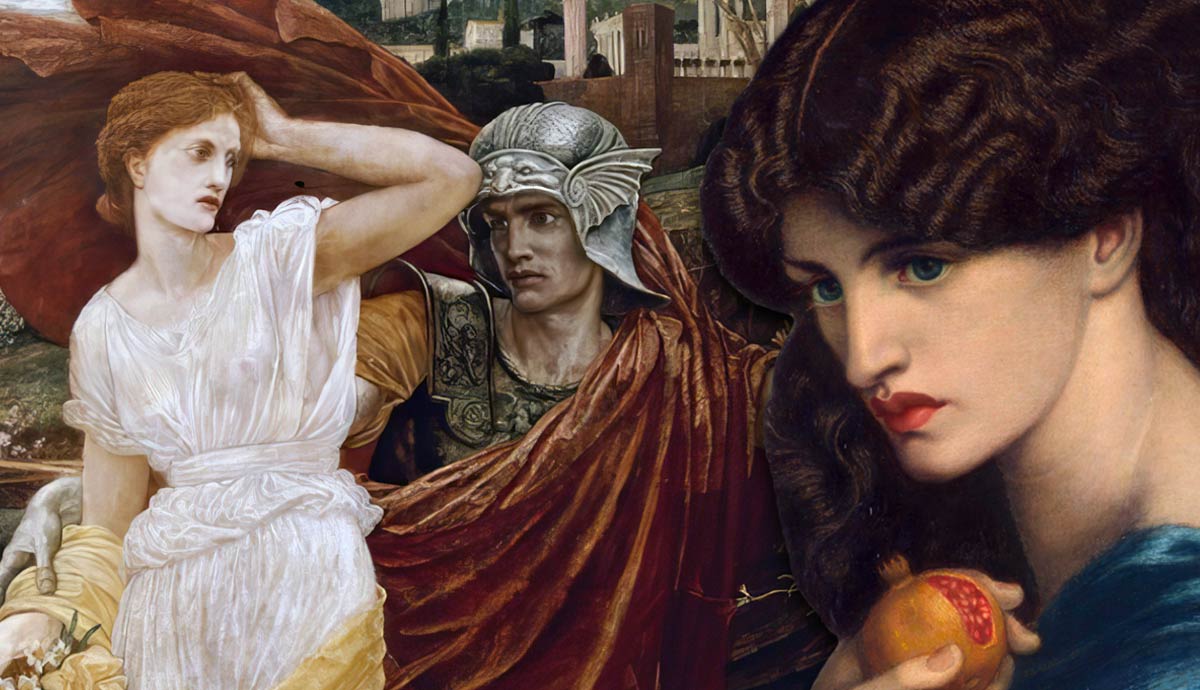
In the 2nd century BCE, rapid socio-economic change was afoot for the plebeian farmers of the Roman Republic. According to the traditional historical narrative, these citizen farmers, who owned family-run smallholdings, were overburdened with military duties during the period of the Second Punic War onwards. No longer able to effectively run their farms, they were displaced by wealthy landowners who established large agricultural estates worked by slaves. This led to an exodus of now landless farmers who became destitute proletarii in urban Rome.
Citizen Farmers: The Backbone of the Roman Republic

Plebeian farmers were the backbone of the Roman Republic. By the late 6th century BCE, after the last Etruscan king of Rome had been overthrown, the young Roman Republic had become a state largely populated by citizen smallholders of the plebeian class. These smallholders were at the heart of Rome’s agricultural output, but they also served in the military and participated politically as citizens.
The Romans grew a variety of grains including wheat and barley as well as legumes like lentils, beans, peas, and chickpeas. As in neighboring Greece, the Romans also cultivated olives and olive oil constituted an important part of the Roman diet. From their neighbors, the Greeks and Carthaginians, the Romans also learnt much about viticulture and began to make their own wine.
Animals were also present on Roman farms. Cows provided milk whilst goats and sheep produced cheese. Of course, they could be eaten too. Oxen and mules provided extra muscle for labor-intensive tasks.
Writing in the 2nd century BCE, Cato the Elder (234–149 BCE) advised those seeking to operate a farm, that “it should have a good climate, not subject to storms; the soil should be good, and naturally strong. If possible, it should lie at the foot of a mountain and face south; the situation should be healthful, there should be a good supply of laborers, it should be well watered, and near it there should be a flourishing town, or the sea, or a navigable stream, or a good and much traveled road.”
Farming and Roman Virtue

The role of the farmer was equally important to the Romans in an ideological sense. Romanitas, or “Roman-ness” — the virtues the Romans ascribed to themselves — consisted of the threefold identity of citizen, solider, and farmer. The ideal Roman who embodied this threefold identity was Lucius Quinctius Cincinnatus, a legendary statesman who lived between 519 and 430 BCE. When Rome was threatened with destruction, Cincinnatus reluctantly left his farm and accepted the position of dictator. After defeating the enemy threatening Rome, he promptly relinquished his dictatorial powers and returned to his humble life as a farmer, thereby exemplifying the virtues the Romans most admired in citizens, soldiers, and farmers.
Roman writers, historians, and philosophers were keen to sing the praises of the humble farmer. For example, Cato claimed that “it is from the farming class that the bravest men and the sturdiest soldiers come, their calling is most highly respected, their livelihood is most assured and is looked on with the least hostility, and those who are engaged in that pursuit are least inclined to be disaffected.”
Conquest, Slavery, and War

By the late 3rd century and throughout the 2nd century BCE, an increased number of socio-economic and political stressors began to burden Roman smallholdings. These were largely caused by the military responsibilities that land-owning farmers were expected to uphold and the ever-increasing influx of slaves from successful conquests. To compound these factors further, wealthy Romans bought up the land and established Latifundia (large agricultural estates) that replaced the family-run smallholdings that had previously made up the majority of Roman farms.
Rome’s dependence on landholding farmers for military service was largely unproblematic if the campaign season was short, and wars were not fought too far from home. During the Second Punic War (218 to 201 BCE), however, the fighting took longer, and conscripted farmers were kept away from their land for longer periods of time. According to historians like Tim Cornell, this made it more difficult for smallholders to operate profitable farms which were often sold off to the wealthy as a result.
The Smallholders are Displaced by Slaves

Several ancient writers paint a grim picture of the situation of small, family-run farms in the 2nd century BCE. According to Plutarch (46 – 119 CE), a law had been passed to prevent the rich from gobbling up all of the suitable farmland by limiting the legal ownership of land to 500 acres, but the wealthy were able to bypass this law by purchasing the land under different names or via other dubious legal loopholes. The result was that, “The poor, who were thus deprived of their farms, were no longer either ready, as they had formerly been, to serve in war or careful in the education of their children; insomuch that in a short time there were comparatively few freemen remaining in all Italy, which swarmed with workhouses full of foreign-born slaves.”
Appian (95 – 165 CE), a Greek historian who lived during the reigns of Trajan, Hadrian, and Antoninus Pius, also described the situation in the 2nd century BCE in gloomy terms. The rich “came to cultivate vast tracts instead of single estates, using slaves as laborers and herdsmen,” wrote Appian. “Thus, certain powerful men became extremely rich, and the race of slaves multiplied throughout the country, while the Italian people dwindled in numbers and strength, being oppressed by penury, taxes, and military service. If they had any respite from these evils they passed their time in idleness, because the land was held by the rich, who employed slaves instead of freemen as cultivators.”
The Latifundia and Moral Decline

As we can discern from Plutarch and Appian, beyond the socio-economic impacts, the ancient historians equated the displacement of the family-run smallholdings with the slave-dependent Latifundia with a concurrent moral decline that degraded the Roman Republic. As such, we must be aware that the sentiments they expressed were hardly dispassionate historical accounts and reflected their own moral outlooks, but this is in itself an interesting insight into how the Romans regarded the humble farmer as morally superior.
Pliny the Elder (23/24 – 79 CE), a Roman philosopher and author, was similarly critical of the Latifundia which had come to dominate large tracts of the Roman and Italian countryside. “Under the hands of honest men everything prospers all the better,” he wrote, “But at the present day these same lands are tilled by slaves whose legs are in chains, by the hands of malefactors and men with a branded face!”
Pliny’s account indicates that similar moral and socio-economic concerns regarding land distribution and agriculture persisted into the imperial period. “If we must confess the truth, it is the wide-spread domains that have been the ruin of Italy, and soon will be that of the provinces as well. Six proprietors were in possession of one half of Africa, at the period when the Emperor Nero had them put to death,” he wrote, concerning the period roughly between 54 and 68 CE. “It is the very worst plan of all, to have land tilled by slaves let loose from the houses of correction, as, indeed, is the case with all work entrusted to men who live without hope,” he added.
The Gracchi Brothers

The displacement of plebeian farmers in the 2nd century BCE created the perfect storm for ambitious politicians to channel the anger of the disaffected masses against the wealthy landowners and patricians who were establishing Latifundia across the countryside.
In 133 BCE, Tiberius Gracchus was elected tribune. He promised to address the problem by redistributing the public land of Rome more equitably and to impose limits on the amount of land that could be owned by individuals. Crucially, the landless farmers who had moved into urban Rome would be reallocated plots of land where they could resume their vocations.

Unsurprisingly, the Senate opposed Tiberius’ reforms and his fellow tribune Marcus Octavius attempted to veto his proposals in the Plebeian Assembly. Tiberius was initially successful in
overcoming these challenges and had Octavius forced out of the Assembly by his supporters. However, when he ran for a second term in 132 BCE, he was met with a political mob led by the senator Scipio Nasica. A fight ensued between the supporters of both men, resulting in the death of Tiberius and many of his companions.
In 123 BCE, Tiberius’ brother Gaius Gracchus became tribune. He too secured popular support on the basis that he would introduce wide sweeping reforms which also earned him the ire of the Senate. In 121 BCE, when Gaius ran for a third term in office, he was ambushed by a political mob led by consul Lucius Opimius and killed. A further 3,000 Gracchi supporters were executed by the Senate after his death.
An Alternative Explanation

It is generally the mainstream view among modern historians that the landlessness of the plebeian farmers was caused by the pressures of military conscription – particularly in the Second Punic War – combined with the widescale land acquisition of the patricians who staffed their new agricultural estates with a massive influx of slaves.
However, this view has been challenged by historian Nathan Rosenstein in his book, Rome at War: Farms, Families, and Death in the Middle Republic. According to Rosenstein, the displacement of plebeian farmers was instead caused by demographic stresses induced by a “baby boom” that occurred after the Second Punic War. The result was that there were too many men competing for too little land. The smallholdings which had been the backbone of the Roman Republic were subdivided too much to be feasible and thus many farmers were forced into the cities where they became impoverished proletarii – citizens who owned little or no land.
Roman Agriculture and Socio-Economic Change

We may never know for sure exactly what combination of factors caused widespread socio-economic change in the rural areas of the Roman Republic. Compelling demographic, literary, and archaeological evidence has been supplied by historians who adhere to the traditional narrative such a s P. A. Brunt, as well as by those like Rosenstein who have offered alternative explanations.
It is also true that we may never know exactly how quickly or comprehensively the socio-economic landscape changed in rural areas. Rosenstein for example, proposes that the Latifundia became the dominant mode of farming in the 1st century BCE, a century or so later than the ancient historians described this transformation occurring.
In any case, a socio-economic transformation did occur that leaves us with plenty of food for thought. As we ponder the implications posed by this particular epoch of Roman history, we may turn a little closer to home, and question what risks and opportunities we are faced with in the present day by the myriad of rapid changes taking place within our own economic, social, and political structures. Thus, as is often the case in history, by looking into the past, we may be holding up a mirror to ourselves.










